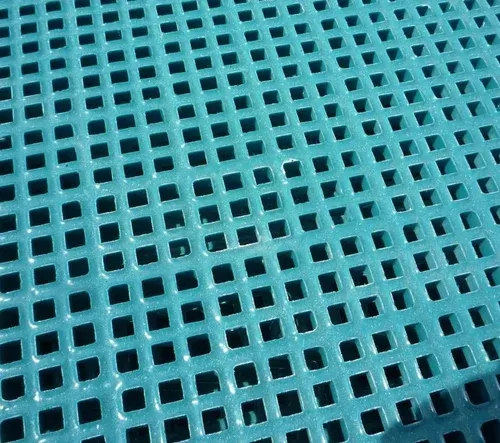loading...
- No. 9, Xingyuan South Street, Dongwaihuan Road, Zaoqiang County, Hengshui, Hebei, China
- admin@zjcomposites.com
- +86 15097380338
- Welcome to visit our website!
frp sheet piling
Understanding FRP Sheet Piling A Modern Solution in Civil Engineering
In the field of civil engineering, the construction industry continually seeks innovative materials and techniques to improve structural integrity, reduce environmental impact, and enhance construction efficiency. One such innovation is Fiber Reinforced Polymer (FRP) sheet piling, a modern solution that has been gaining traction in recent years. This article delves into the characteristics, advantages, applications, and future prospects of FRP sheet piling.
What is FRP Sheet Piling?
FRP sheet piling is a type of engineered product made from composite materials, primarily composed of a polymer matrix reinforced with glass, carbon, or aramid fibers. The result is a lightweight yet highly durable material that retains considerable strength and stability. FRP sheet piles are frequently used in applications such as retaining walls, waterfront structures, and foundations, where traditional materials like steel and concrete may have limitations.
Advantages of FRP Sheet Piling
1. Corrosion Resistance One of the significant advantages of FRP sheet piling is its exceptional resistance to corrosion. In environments subject to moisture, salts, or chemicals, traditional materials often face degradation and failure over time. FRP, on the other hand, remains unaffected by these environmental stressors, leading to extended service life and reduced maintenance costs.
2. Lightweight and Versatile FRP sheet piles are considerably lighter than their steel counterparts, making them easier to transport and install. This lightweight property translates into reduced equipment costs and labor time during construction. Additionally, FRP can be manufactured in various shapes and sizes, providing flexibility to engineers in design and implementation.
3. High Strength-to-Weight Ratio Despite being lightweight, FRP sheet piles possess a high strength-to-weight ratio, providing robustness and stability in various construction applications. This allows engineers to design structures that can withstand significant loads while minimizing material usage.
4. Environmental Sustainability With growing concerns regarding climate change and sustainability, the use of FRP sheet piling presents an eco-friendly alternative. The production of FRP generates fewer greenhouse gases compared to traditional materials, and its longevity minimizes the need for replacements, consequently reducing waste.
5. Aesthetic Appeal FRP sheet piles can be produced in a variety of colors and finishes, enhancing the aesthetic aspect of construction projects. This feature is particularly useful in urban settings where visual impact is a consideration.
frp sheet piling

Applications of FRP Sheet Piling
FRP sheet piling is versatile and can be utilized in various applications
- Marine and Waterfront Structures Due to their corrosion resistance, FRP sheet piles are excellent for use in marine environments, such as docks, piers, and harbors. They provide effective solutions for resisting wave action and grounding effects while protecting shorelines from erosion.
- Retaining Walls FRP sheet piles can be used to create retaining walls in landscapes where soil stability is crucial. Their flexibility and strength make them ideal for managing earth pressures while maintaining aesthetic integrity.
- Foundations In areas with poor soil conditions, FRP sheet piling can be installed as part of a foundation system, providing support and stability for buildings and other structures.
- Environmental Projects FRP is also employed in projects aimed at environmental restoration, such as wetlands and riverbank protection, due to its environmentally friendly properties and resistance to decay.
Future Prospects
The future of FRP sheet piling looks promising as construction standards evolve and the demand for sustainable building solutions continues to rise. Ongoing advancements in material science may lead to even stronger and more adaptable FRP alternatives, allowing for broader applications across civil engineering projects. Furthermore, as awareness of environmental conservation grows, the use of sustainable materials like FRP will likely become a norm rather than an exception.
Conclusion
In conclusion, FRP sheet piling represents a revolutionary step forward in construction technology. With its unique combination of corrosion resistance, lightweight properties, and environmental sustainability, it is poised to become a staple in the civil engineering toolkit. As engineers and builders look for innovative approaches to meet contemporary challenges, FRP sheet piling stands out as an effective solution that meets the demands of modern infrastructure while protecting our planet.
-
The Rise of FRP Profiles: Strong, Lightweight, and Built to LastNewsJul.14,2025
-
SMC Panel Tanks: A Modern Water Storage Solution for All EnvironmentsNewsJul.14,2025
-
GRP Grating: A Modern Solution for Safe and Durable Access SystemsNewsJul.14,2025
-
Galvanized Steel Water Tanks: Durable, Reliable, and Ready for UseNewsJul.14,2025
-
FRP Mini Mesh Grating: The Safer, Smarter Flooring SolutionNewsJul.14,2025
-
Exploring FRP Vessels: Durable Solutions for Modern Fluid HandlingNewsJul.14,2025
-
GRP Structures: The Future of Lightweight, High-Performance EngineeringNewsJun.20,2025
